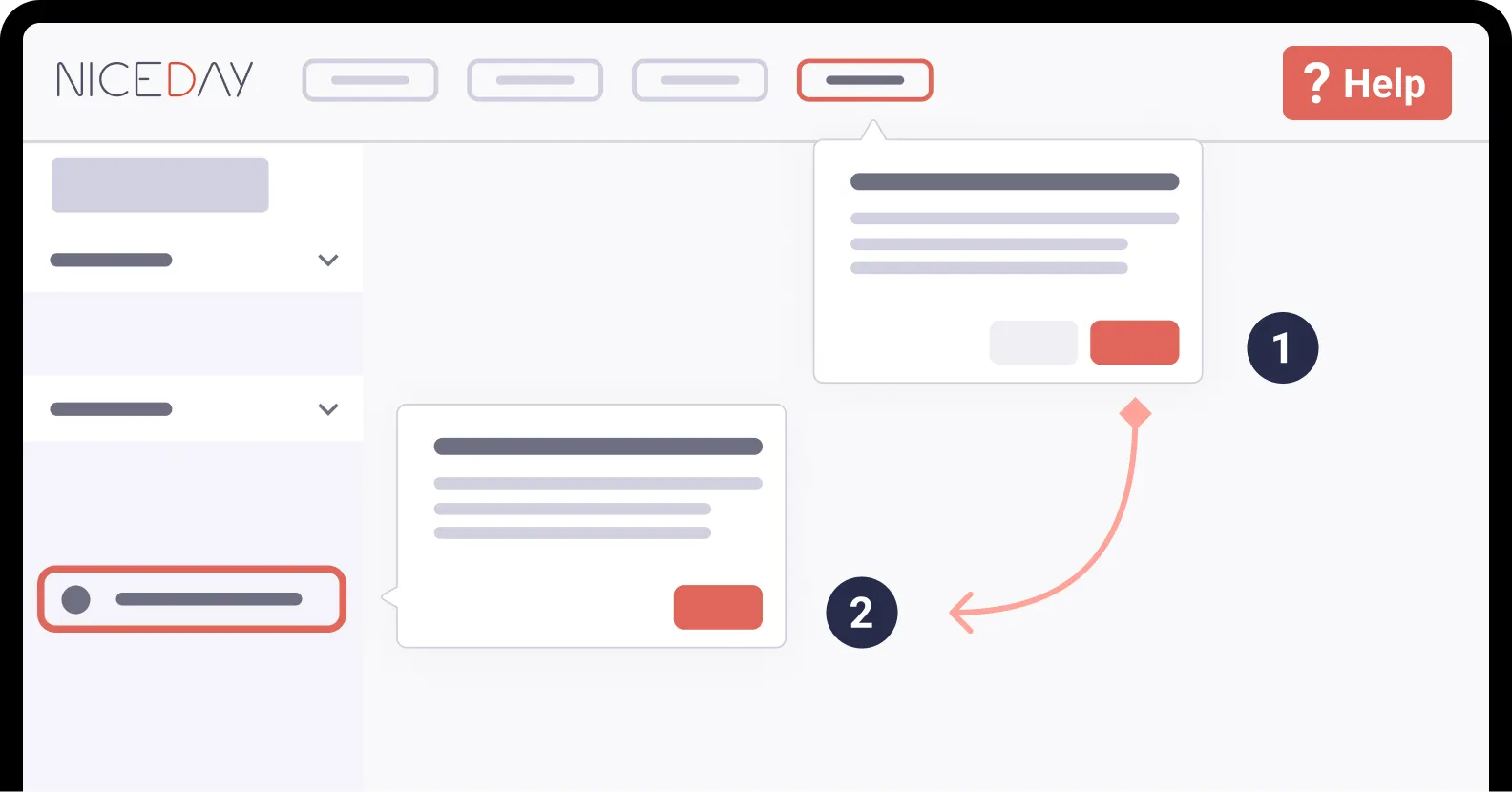


Problem
The NiceDay web app lacked an in-app onboarding process. Users were left to navigate the application independently. This steep learning curve led to frustration and a high bounce rate.
New customers had to be onboarded through a 1-on-1 video call with a NiceDay in-house therapist. As more customers joined, this approach did not scale well, especially in a world where in-app onboarding is expected from digital platforms.
NiceDay
The in-house therapists had limited time available for the 1-on-1 meeting. Because of that, the customers could not get the "client experience" in the fastest time frame. Aside from personnel, the product was continually changing, and quickly. The new onboarding solution needed to be scalable and facilitate the fast-pace of product development.
Customers (therapists from organisations)
Customers wanted to familiarize themselves with NiceDay quickly and with ease.
My role
Design lead
Other contributors
Product manager
Content writer
UX Timeline
December 2022 (1 month)
Platform
Web app
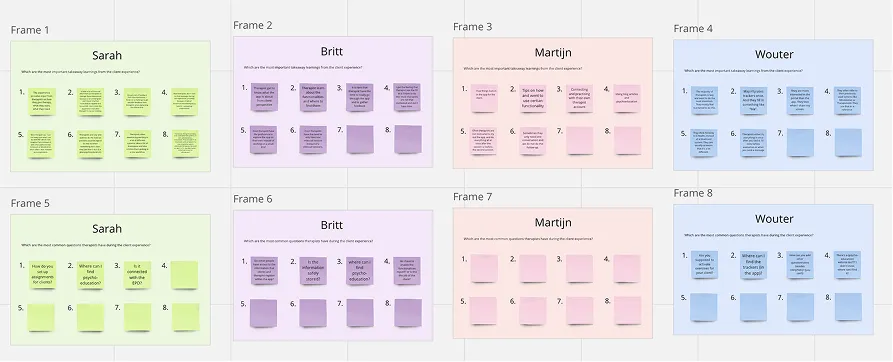
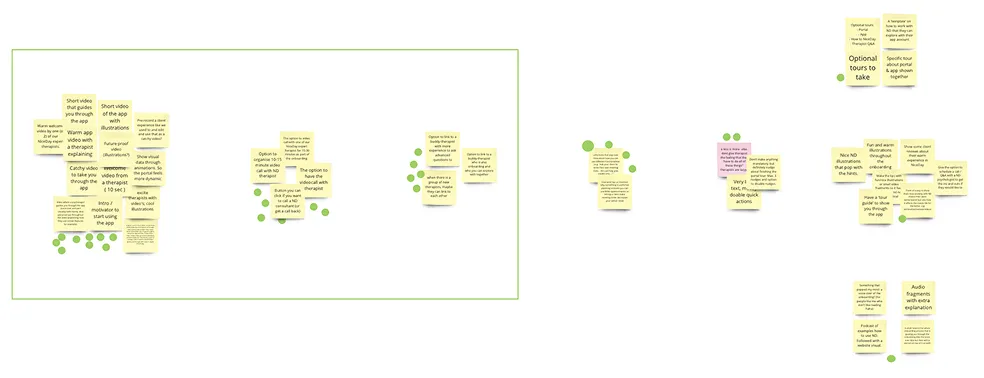
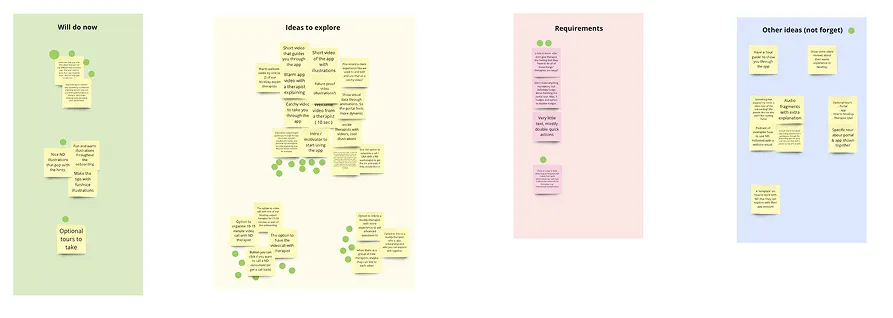

Understand
The “how it was” experience
Discovery of what was needed
I conducted interviews with a diverse range of therapists, including in-house therapists, newly onboarded therapists who had never used the product, as well as experienced therapists in order to understand each of their day-to-day needs and preferences.
We interviewed potential organizations interested in NiceDay, gaining perspective on requirements and expected key features for an e-health tool.
I facilitated additional workshops with in-house therapists to gather essential requirements for the onboarding experience.
Learning and common practices
Utilize industry insights by studying relevant competitors and other experts in the field to avoid reinventing the wheel.
Conducted an in-depth exploration of state-of-the-art onboarding practices, drawing inspiration and guidance from thought leaders in the field of Product-led Growth.
Summing everything up
Mapped out the user journey and identified potential risks in the process.
Crafted the first draft of the onboarding / guided tours.
Ideate
Up the drawing board
Equipped with the new understanding of each customer's needs, I decided which features to highlight and what flows should go with them. Throughout the process I focused on showing "A-ha" moments as fast as possible.

Miro board of one of the earliest ideas

Mastering the new tool
As a part of our approach to incorporate in-app onboarding, we opted for a third party no-code software solution. As I was the individual responsible for implementing this onboarding process into our product, I took on the task of learning the intricacies of this third-party tool and made critical product decisions throughout the project.
Some key decisions I made include:
Naming conventions for the tours and hints.
Establishing rules and permissions for the tours.
Applying CSS styling to enhance the visual experience.
Implementing an archive method using a translation sheet for future reference and updates.
Iterate, polish to perfection
Time was an issue: the in-app onboarding needed to be completed before January 2023 when a significant influx of new therapists were expected to join the platform.
I conducted user testing both internally and externally using the 'thinking out loud' method to gather valuable insights and refine the onboarding experience.
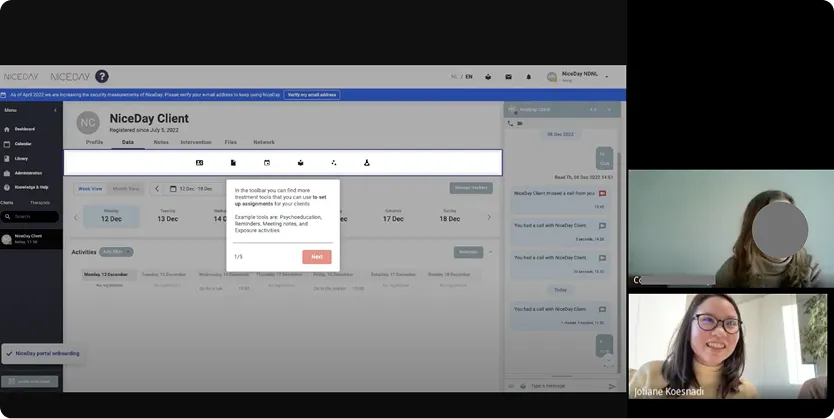
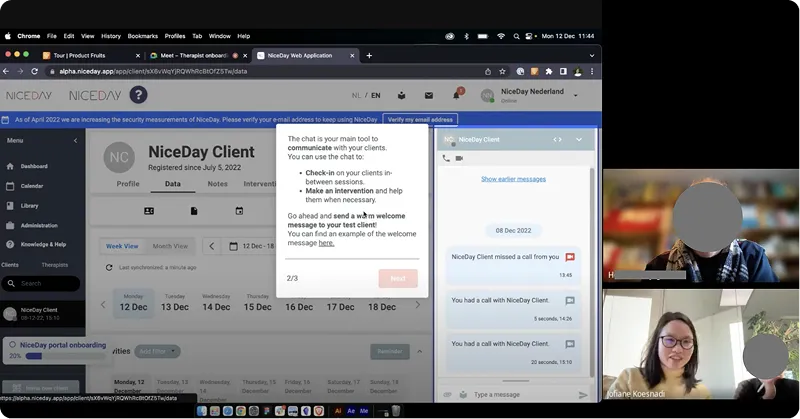
Learnings
By embracing a "learning by doing" philosophy, I was able to experiment with various different directions with each iteration
Streamlining Steps
Originally comprising of an 8-minute onboarding tour, I identified a significant drop in tester attention and engagement around the halfway mark of our first iteration. I addressed the issue by reducing both the number of steps and accompanying text, along with a flow change.
Advanced Tours Exploration
Recognizing varying time constraints among users on first login, I introduced the concept of advancing through additional tours for those with more time.
I determined opportunities to integrate hints and tours with context on different parts of the product, to divide the content from the main onboarding tour.
Copywriting tone
Through user feedback, we identified a specific writing tone that resonated well with new users.
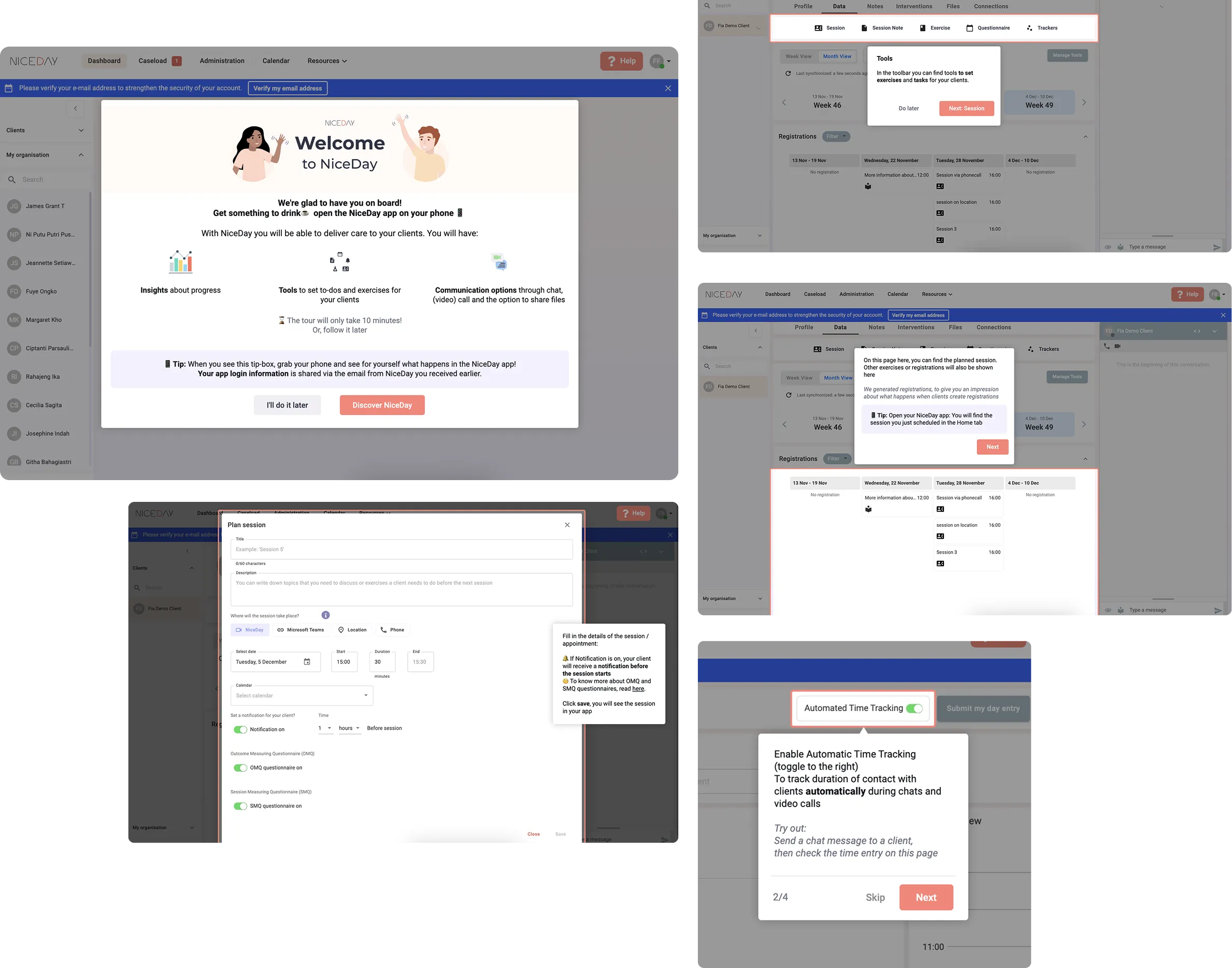
Final results
One primary flow, two branches, with three pause points
Successfully developed and implemented the final product, within the deadline.
Internal workshop
Conducted workshops to teach the product team the development process using the third-party tool. This ensured that the entire team now understands how to make future changes to the onboarding process alongside product development on new and existing features.
Periodic monitoring
Established a systematic process for periodic statistical analysis to track user engagement and feedback.
Measurable results
40%
Less support questions regarding key product features during the first two weeks
20%
Increase of key product feature usage
Future improvement
As this onboarding is the very first version, I have concluded some directions to go for future iterations, such as:
Goal based onboarding to personalize with what the customers need.
More advanced context tour of product’s integration with the help of developers and JS API triggers.
Personalized based on the therapists’ main organization use and need